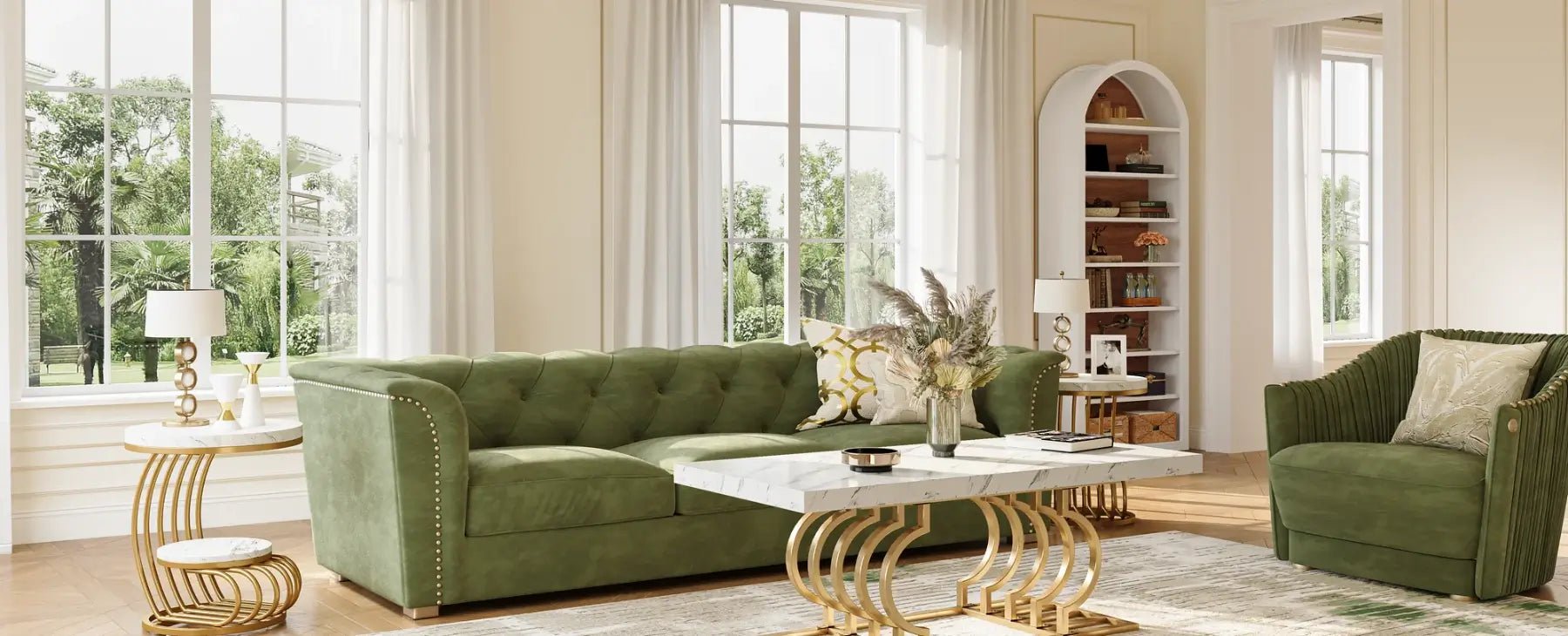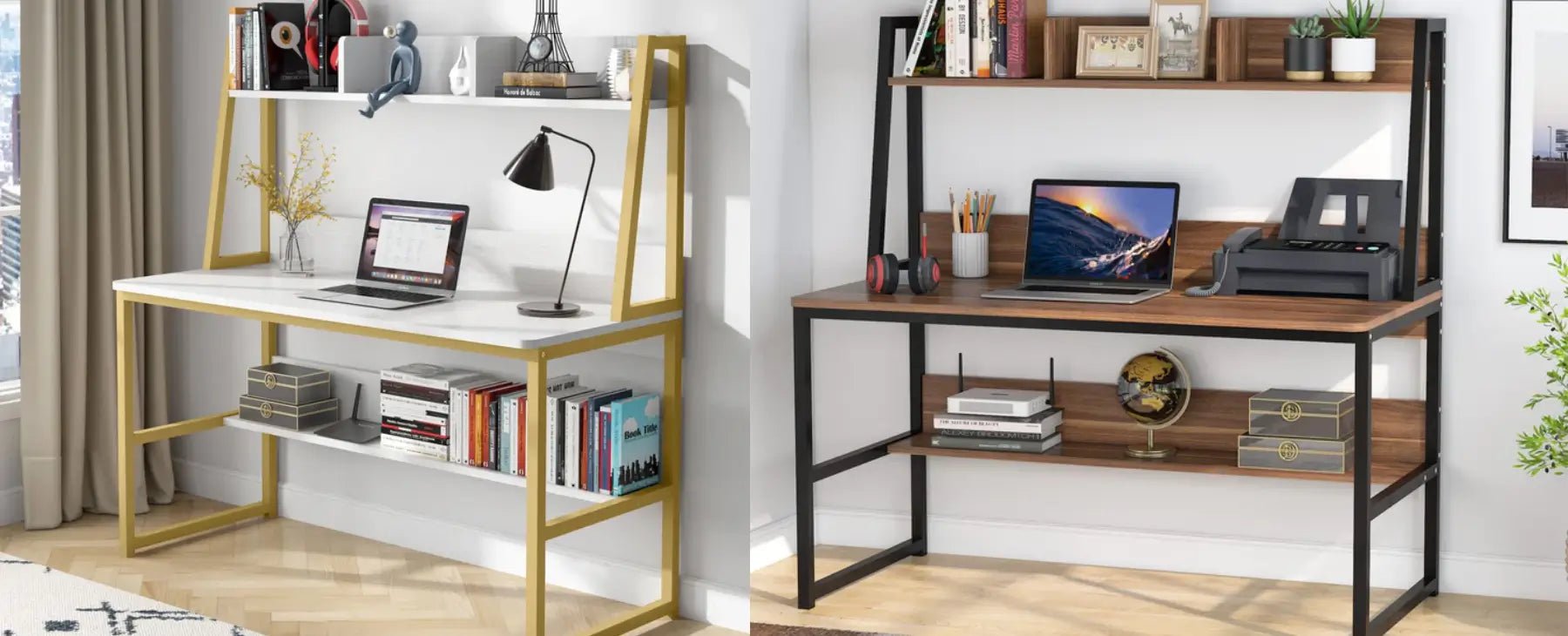What Is the 2/3 Rule for Living Rooms?
The 2/3 rule, sometimes referred to as the golden ratio in interior design, is a guiding principle for arranging furniture in a harmonious way. It suggests that major pieces—like your sofa, area rug, or coffee table—should follow a proportion of roughly two-thirds. For example, if your couch is 6 feet long, your coffee table should be about 4 feet in length (which is two-thirds of the sofa's size).
This rule helps maintain visual balance and ensures that no piece overpowers the rest of the room. It’s especially useful in small living rooms, where improper scale can easily make the space feel cluttered or awkward.
Best Types of Furniture for Small Living Rooms
When furnishing a small living room, every piece needs to earn its place. The best furniture isn’t just stylish—it’s smart, multifunctional, and proportioned to suit a tighter footprint. Here's a breakdown of the most effective types of furniture that can help you make the most of every square inch.
Compact Sofas with Clean Lines
In small spaces, oversized sectionals or deep recliners can easily dominate the room. Instead, look for compact sofas with clean, modern silhouettes. Armless or low-profile options make a room feel more open and less crowded.
Pro tip: Neutral tones like gray, beige, or soft ivory enhance visual space and are easy to style.

Multifunctional Coffee Tables & End Tables
Furniture that does double duty is essential in tight quarters. Opt for coffee tables with hidden storage, lift tops, or built-in shelves. Nesting end tables are also great—they provide surface space when needed and tuck away when not in use.
A few modern designs, like those from Tribesigns, combine storage and style, making them a smart pick for small-space dwellers.

Slim TV Stands and Console Tables
Instead of large media units, go for a narrow TV stand that keeps your electronics organized without hogging floor space. A simple console table can also function as a minimalist media center or be styled along an empty wall with decor and baskets.

Benches & Ottomans with Storage
Extra seating doesn’t have to mean extra clutter. Benches and ottomans with built-in storage provide flexibility—they can be used as seats, footrests, or small tables. When not in use, slide them under a console or window for easy access and visual tidiness.
Corner Bookshelves for Vertical Storage
Floor space is premium, so take advantage of your corners. A tall corner bookshelf adds vertical storage without blocking sightlines or traffic flow. It’s a perfect solution for storing books, plants, or decorative pieces while maximizing underutilized areas.
Choosing the right furniture for a small living room is all about balance—you want each item to look good, serve multiple purposes, and visually lighten the space. In the next section, we’ll look at how to arrange these smart pieces to unlock even more functionality and style.

Layer Your Lighting
In a small living room, layered lighting not only enhances the ambiance but also helps define furniture zones.
Start with ambient lighting (like ceiling lights), then add task lighting—think table lamps or wall-mounted sconces near a sofa or console table. Finally, introduce accent lighting such as LED strips on a bookshelf or a spotlight over artwork to create depth and visual interest.
If you’re using a console table or media unit, consider placing a small table lamp or framed mirror with backlighting to reflect light and add dimension without taking up floor space.
Keep searching for small room furniture inspiration:
- 5 Expert Tips to Buy the Best Plant Stands for Small Spaces
- 15 Smart Shoe Storage Ideas to Tidy Up Small Space
- Best Storage Ideas for Small Space- Tribesigns Corner Shelves
- Coffee tables for small space
- The Best Computer Desks for Small Spaces in 2022
How to Decorate a Small Living Room
1) Define one Focal Wall and Build the Layout Around It
Pick the TV, fireplace, or a large artwork. Face the sofa toward that point and keep traffic flowing around the seating group. Float at least one piece so the room breathes.
2) Right-size the Seating and Protect Pathways
Choose an apartment sofa or loveseat (about 68–78"). Pair it with two light chairs instead of a bulky second sofa. Leave 30–36" for walkways and 16–18" between sofa and coffee table.
3) Use Vertical Storage to Free the Floor
Stack storage up, not out. Install a tall bookcase or wall shelves and mix open display with a closed base to hide clutter. Park baskets on lower shelves to swallow remotes, cables, and throws.
4) Layer Warm Lighting; Stop Relying on One Ceiling Fixture
Combine ambient (ceiling), task (floor/desk), and accent (sconces/LED strips). Aim a floor lamp at the ceiling corner to bounce light and “lift” the room. Put everything on dimmers to tune mood and depth.
5) Stretch the Room with Color, Curtains, and Mirrors
Paint walls and trim the same hue to blur edges. Hang curtains high and wide to raise the eye line. Place a large mirror opposite a window or lamp to double the light.
6) Choose Airy, Multi-tasking Tables
Pick a lift-top coffee table for laptop meals and hidden storage. Use nesting side tables that expand for guests and tuck in daily. Favor round or glass pieces to keep sightlines open.
7) Edit Styling; Add Texture With Intention
Group decor in threes, vary height, and leave negative space. Anchor the scheme with a full-size rug under the front legs of major pieces. Layer two or three textures (woven, metal, nubby textile) to add richness without clutter.
What Color Furniture Is Best for Small Rooms?
In small living rooms, lighter and neutral-colored furniture tends to work best. Shades like soft gray, beige, ivory, light taupe, and even pastels can make the room feel more open and airy. These colors reflect light rather than absorb it, which helps visually expand the space.
That said, don't be afraid to add a pop of color or texture through accent chairs, pillows, or throws. Just keep your primary furniture pieces—like sofas and sectionals—in a light or neutral tone to maintain an overall sense of spaciousness.
Small Living Room Mistakes to Avoid
- Only using “mini” furniture: Underscaled pieces make the room feel like a dollhouse. Mix compact seating with one generous piece (full-size rug, taller bookcase) to anchor the space.
- One harsh overhead light: Flat, cold lighting shrinks a room. Layer warm sources and add dimmers.
- Ignoring cable clutter: Visible cords break the visual calm. Route through furniture with grommets and clips; choose consoles with built-in management.
- Pushing furniture to all four walls: Creates dead space in the middle and poor conversation flow. Float at least one piece.
- Neglecting the ceiling: A pale tint, subtle wallpaper, or simple beams can add height and polish.
Make It Yours
At the end of the day, every living space is as unique as the person who lives in it. While popular layout ideas can be helpful, don’t feel pressured to follow the rules too closely. If you have your own vision for how furniture should be arranged, embrace it. The most important thing is that your space feels good to you—comfortable, functional, and full of joy.
No matter your style, Tribesigns is here to support your vision with thoughtfully designed furniture that brings out the best in your home. Follow us on Pinterest and Instagram to explore creative layout ideas, real home makeovers, and styling tips from the Tribesigns community.
Frequently Asked Questions
What’s the best small living room layout?
Anchor one focal wall (TV/fireplace/art), float a compact sofa facing it, add a round coffee table, and flank with two light chairs. Keep a 30–36" aisle on the “traffic” side.
Can I fit a dining spot in a small living room?
Yes—use a drop-leaf table behind the sofa or a wall-mounted fold-down. Stash two stackable stools under a console.
How do I make it look bigger without repainting?
Add a large mirror opposite a window, swap heavy drapes for airy panels hung high and wide, and declutter with closed-base storage.
What lighting is best for small rooms?
Warm bulbs (2700–3000K) and layered sources. If floor space is tight, use wall sconces and LED strips in shelving.
What should I buy first on a tight budget?
A properly sized rug and layered lighting deliver the biggest visual upgrade for the least money.



